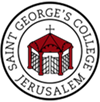The study pilgrimage, Acts in Eastertide, engages the Scriptures, places, and
pilgrimage traditions associated with the books of Acts which are set in present-day
Israel-Palestine (e.g., Acts 1–12, 15, 21–26). The course will embody the post-
Resurrection movements and narratives of the early Church, beginning with the
Ascension of Jesus and the descent of the Holy Spirit at Pentecost in Jerusalem,
moving through Judea and Samaria, and sending participants home to the ends of the
world. Topics of interest will include the Jerusalem Temple, Old Testament figures
mentioned in Acts, the Judas traditions, and the stoning of Stephen, as well as the
figures of James the Great, James the brother of Jesus, Philip the Deacon, the
Ethiopian Eunuch, Dorcas (Tabitha), Cornelius, Peter, and Paul. Day trips are planned
to Hebron (Judea), Nablus (Samaria), Beit Jamal Monastery (St Stephen), Jaffa, and
Caesarea Maritima. In the spirit of Pentecost, the course will include voices and site
visits representing various cultures and traditions of the Christian Church. All nights will
be spent at St George’s College in Jerusalem.
Pilgrimage Descriptions
Footsteps of Jesus is a 10-day study pilgrimage focusing on the Scriptures, sites, and landscapes associated with Jesus’ life, death, and resurrection.
The Holy Land and the Arts, led by guest course leader, Dr. Barbara Drake Boehm (Paul and Jill Ruddock Curator Emerita, The Met Cloisters, New York), is a study pilgrimage integrating two primary foci: (1) Complimented by on-site visits to corresponding sites and landscapes, the course explores how Western art has depicted events of Christian scriptures (the Hebrew Bible and the New Testament), including Jesus’ nativity stories, his baptism in the Jordan River, his Galilee ministry, and Holy Week events culminating in his crucifixion and resurrection; (2) Recognizing the contributions, past and present, of the three Abrahamic faiths to the Land of the Holy One, the course engages the rich legacy of historical art and architecture which the land has preserved from the Jewish, Christian, and Muslim traditions. It likewise highlights the role of women in the Holy Land (e.g., the daughters of Jerusalem).
In 2022 Eastern Orthodox Easter and Western Easter will be one week apart, affording the remarkable opportunity to experience two very different Holy Weeks and Easters back-to-back in Jerusalem. It will include a three-day excursion to Galilee as well.
Introduction to the Bible Lands (Basic Course)
The Introduction to the Bible Lands course visits key biblical sites from the Old and New Testaments, including a few places not commonly on our Footsteps of Jesus and Palestine of Jesus courses. Our shortest study pilgrimage (8 full days), the course traverses the principal regions and landscapes of the Holy Land in Israel and the West Bank, visiting archaeological parks, church sites, and museums. Integrating education and spirituality, the course consists of lecture briefings and on-site teaching as well as time for reflection, prayer, and worship. The course includes a two-day / one-night trip to the Galilee (For an advanced course, see The Bible Lands: Level 2 which will be offered in 2024).
During the tour you will explore some of the key biblical landscapes to the east of the Jordan River, including the lands of Moab, Edom, and Midian. The Jordan study tour is intended as an add-on to our other programmes, but can also be taken as a stand-alone module.
This course is an interfaith experience for Jews, Christians and Muslims in which they will encounter the land of prophets, monarchs, and holy people of the Abrahamic faiths.
The Women of the Bible course is a ten day study pilgrimage which offers a reflective spiritual experience visiting the holy sites relating to both the Old and New Testaments highlighting especially the stories of women.








